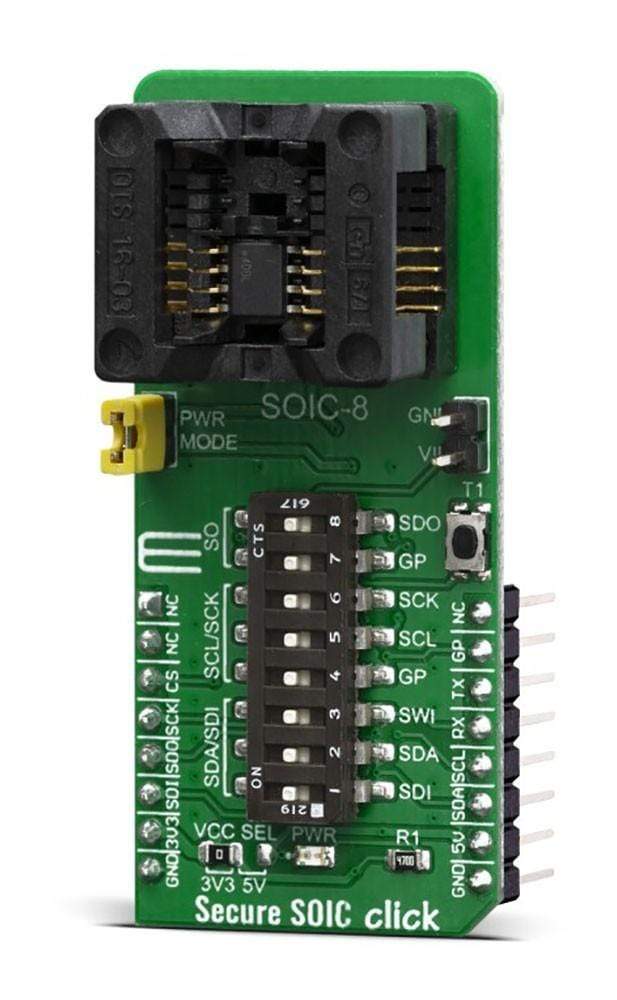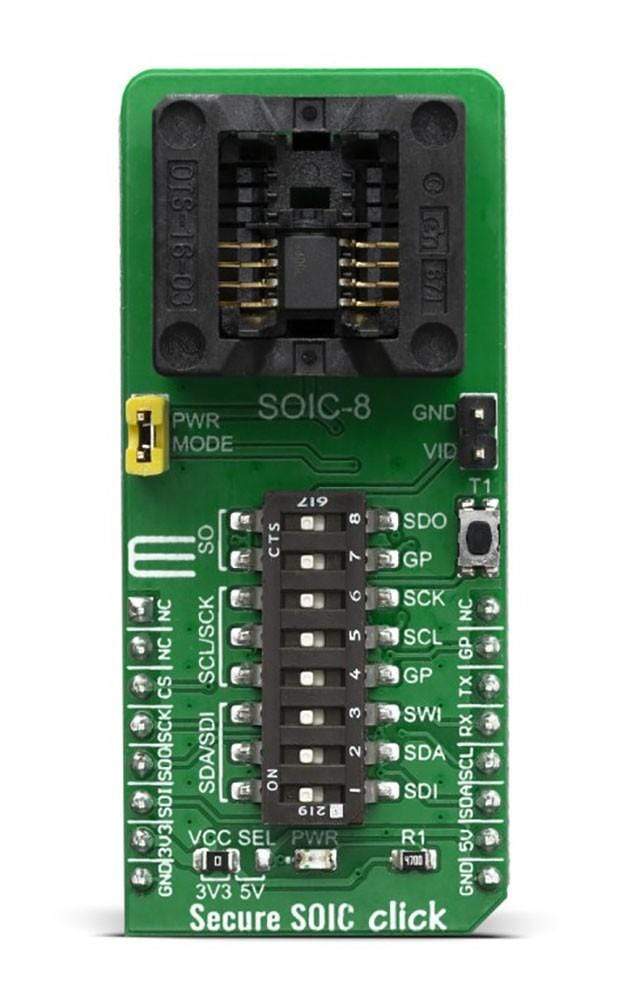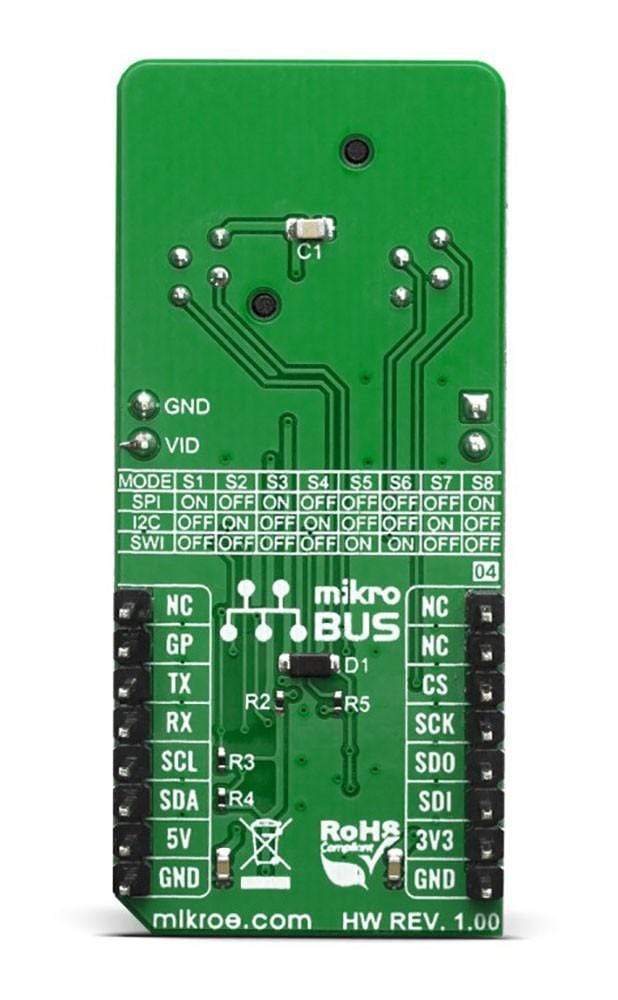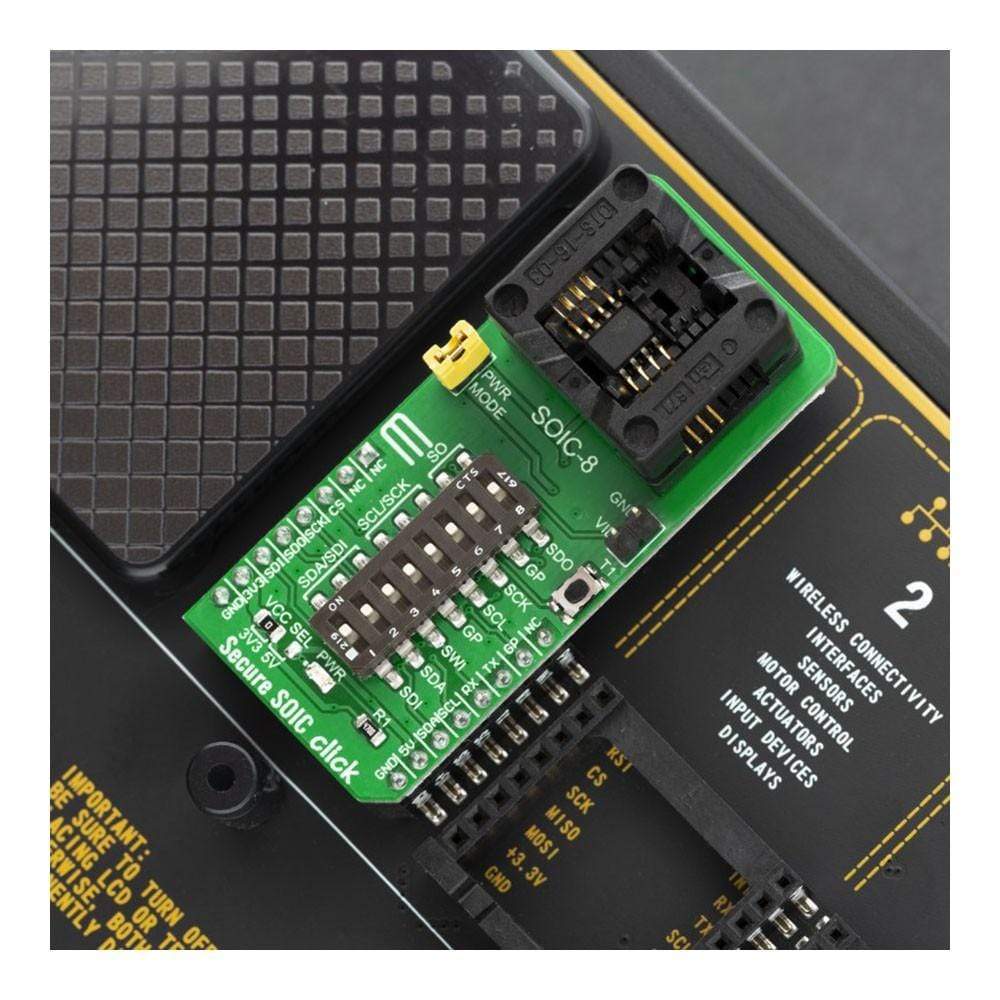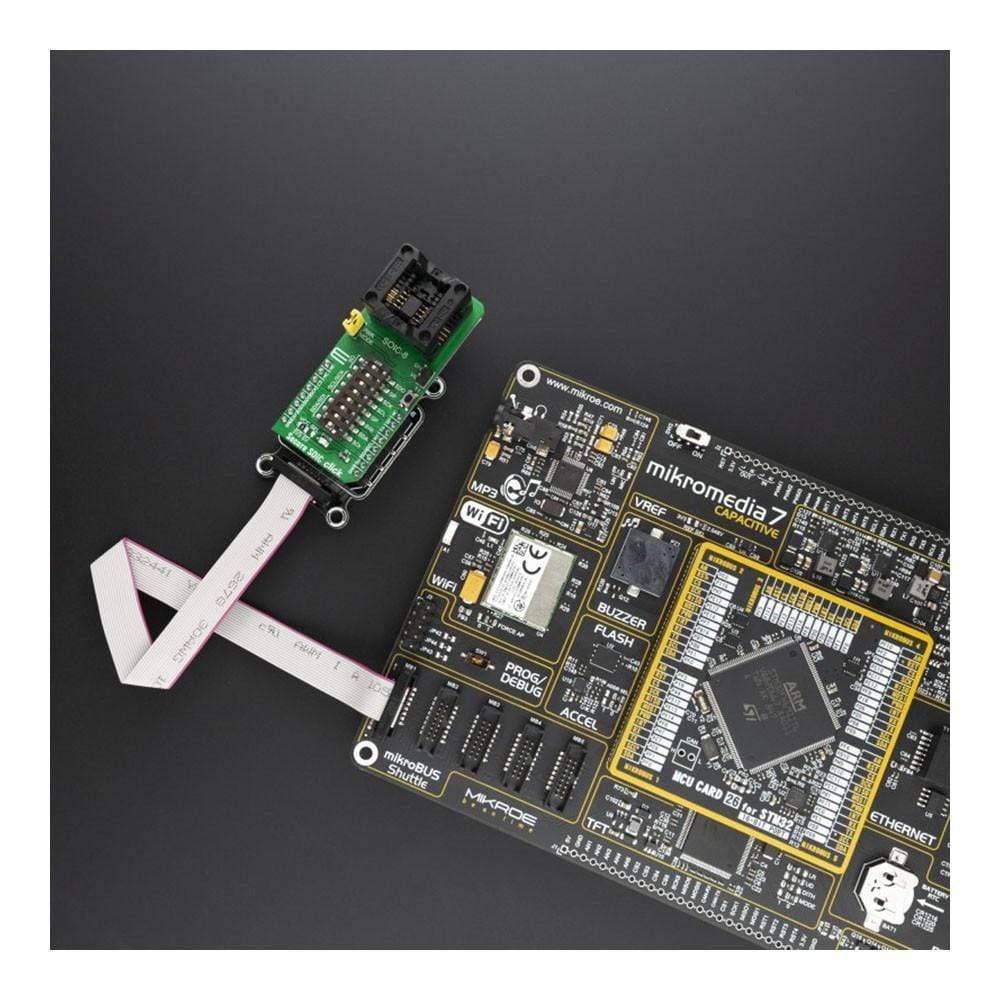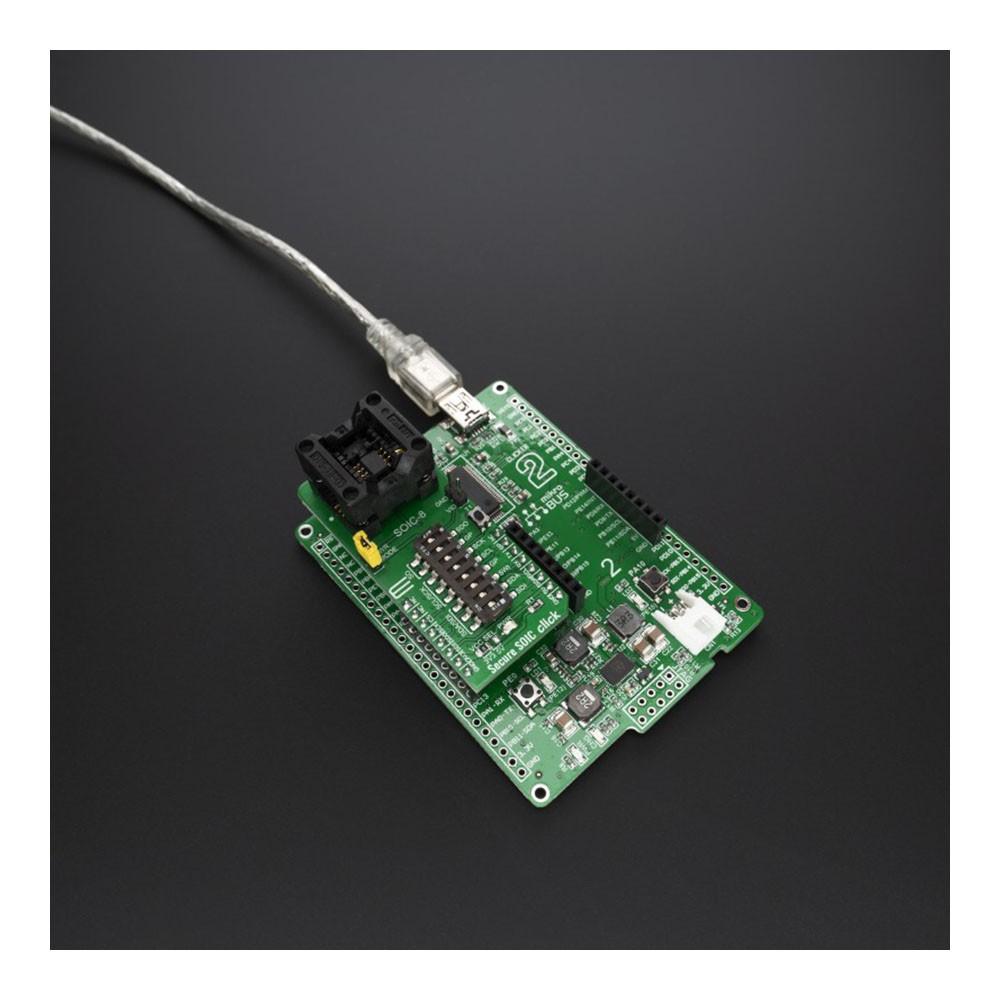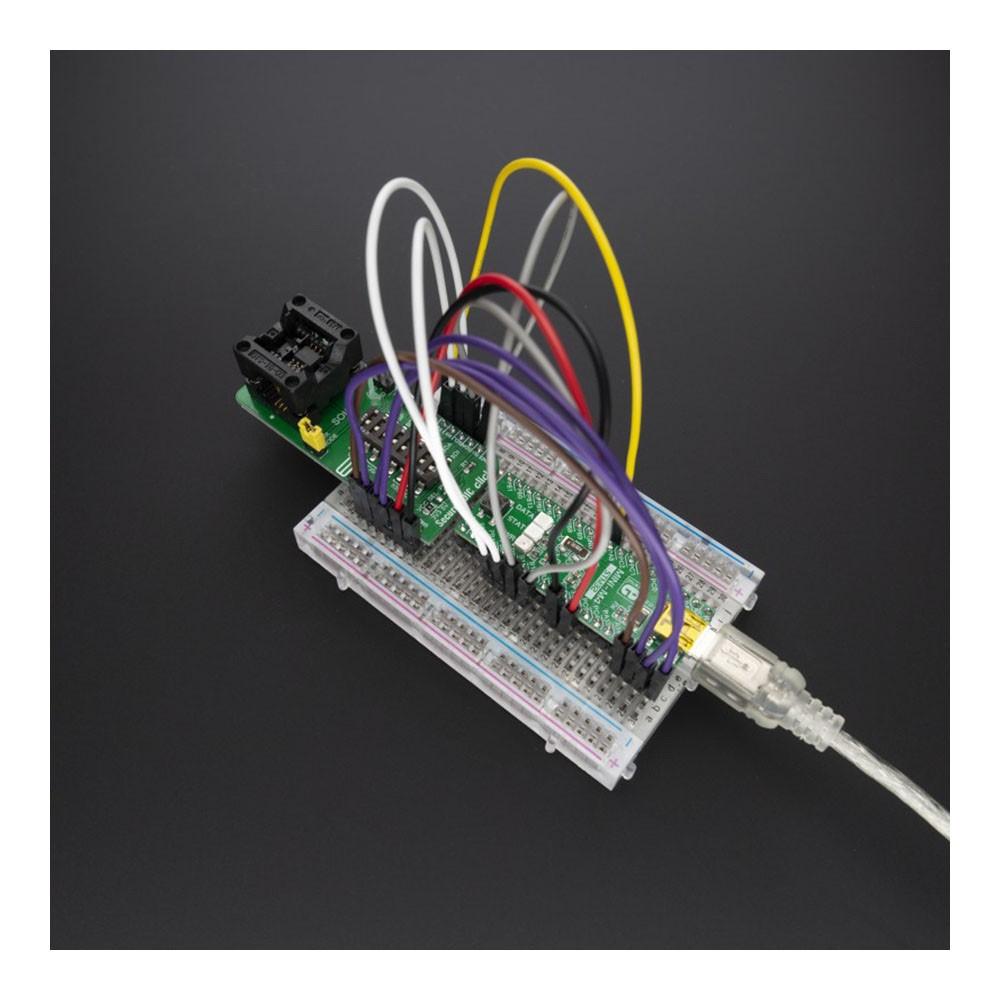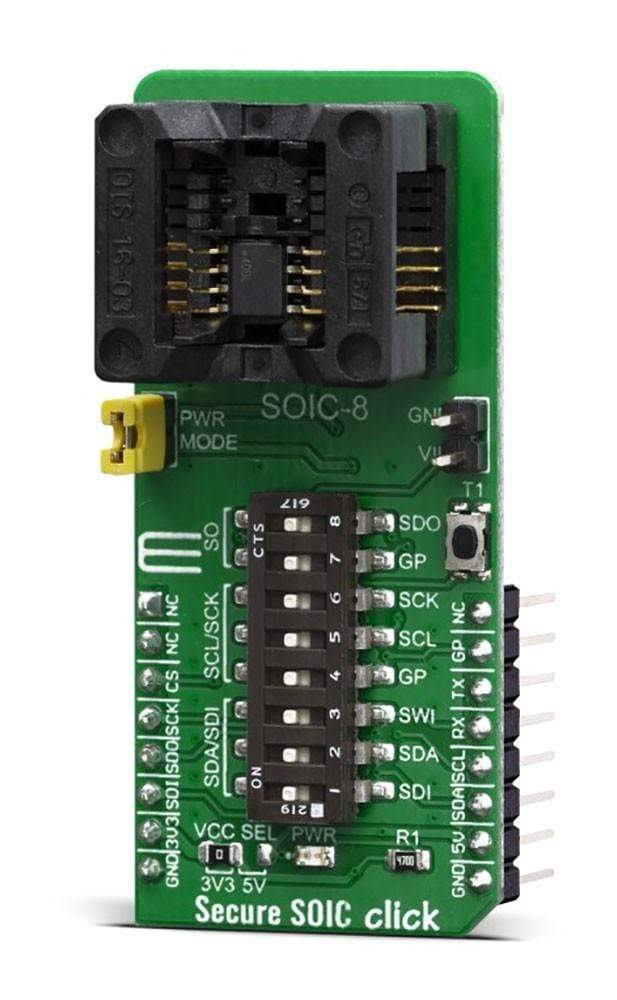
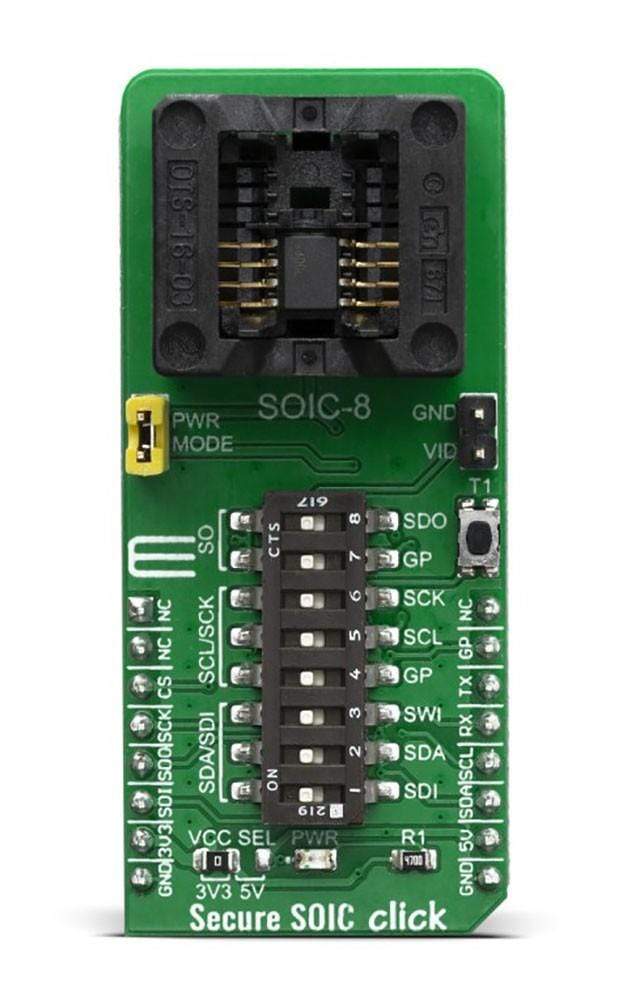
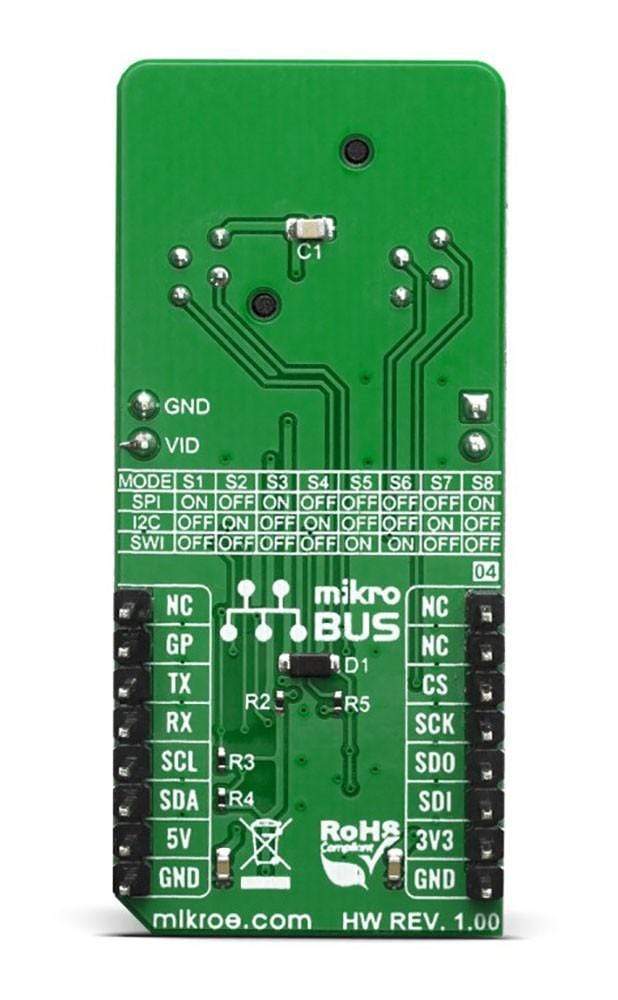
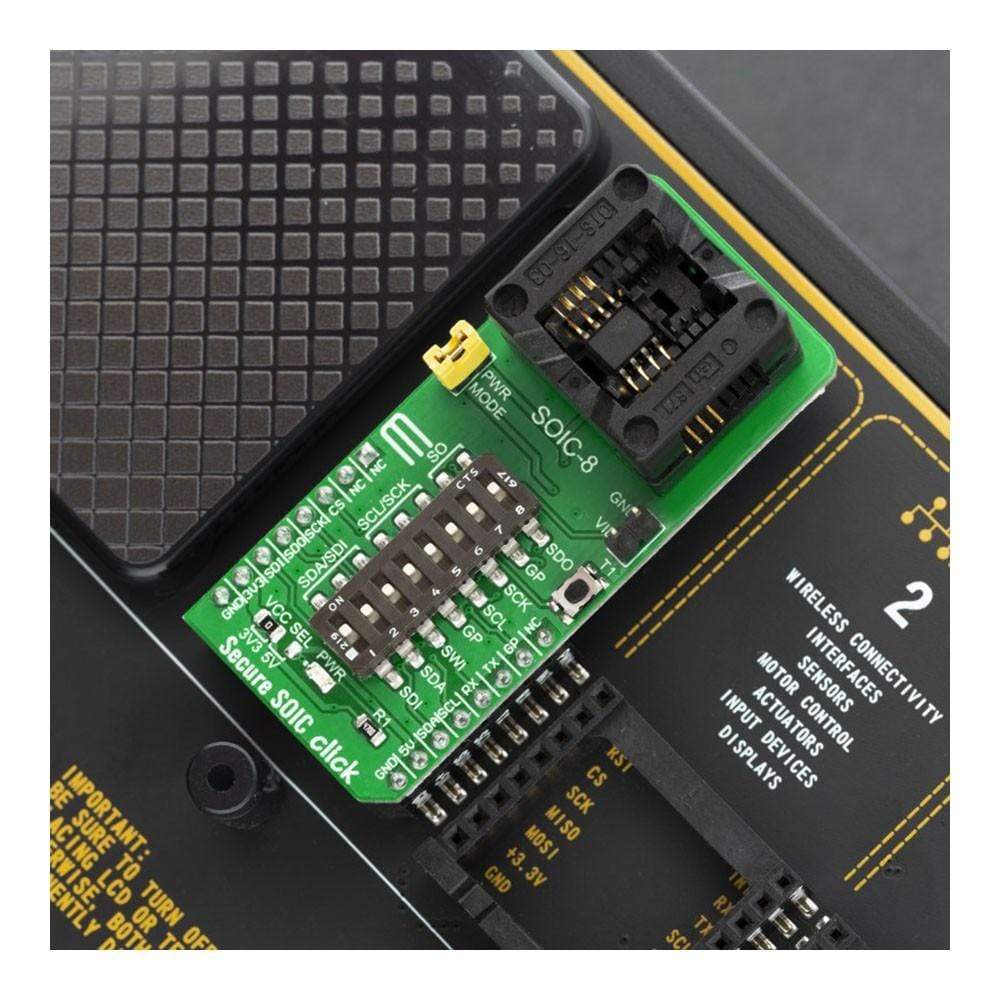
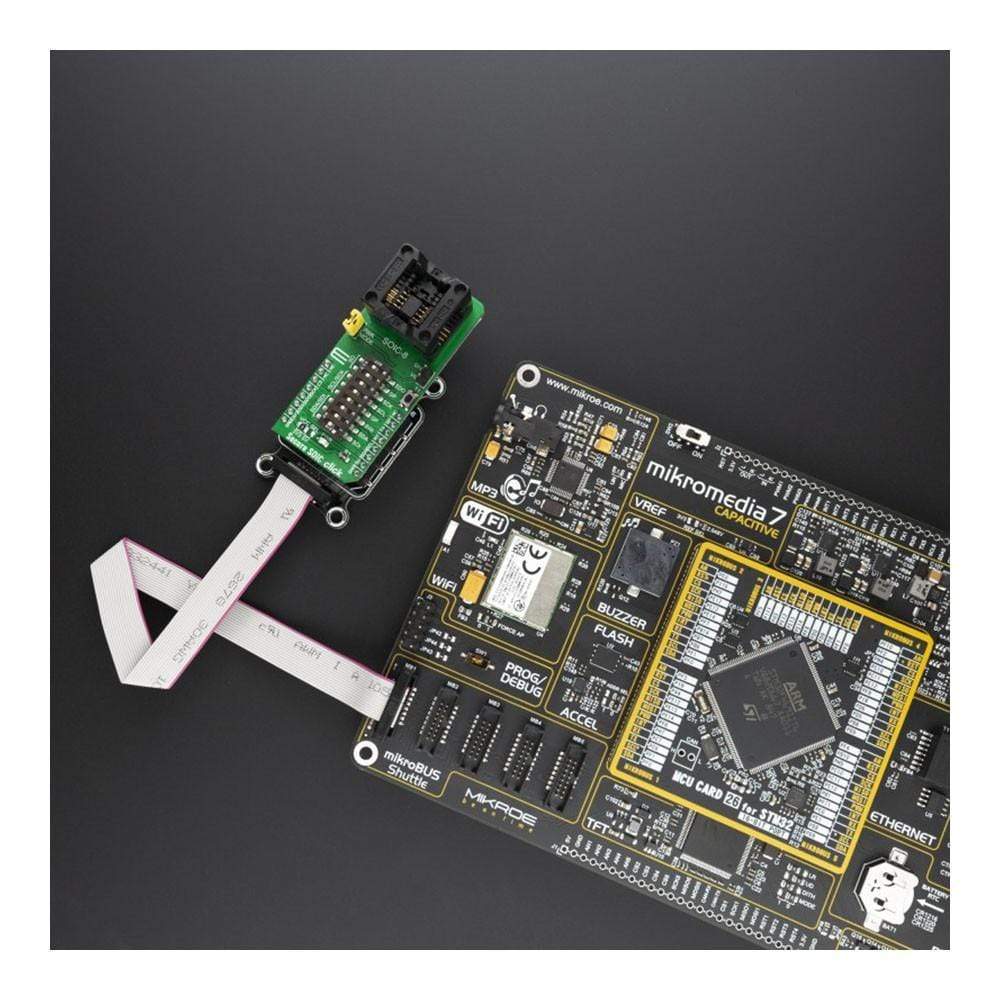
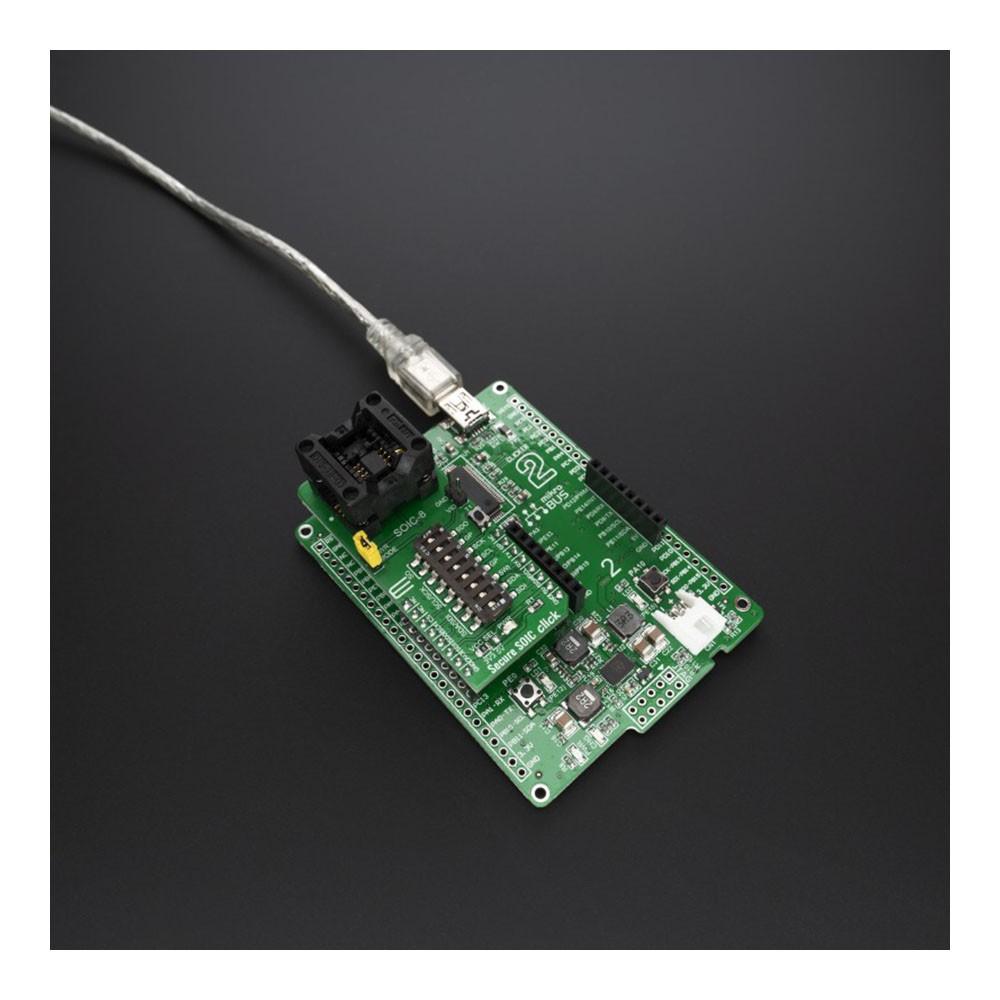
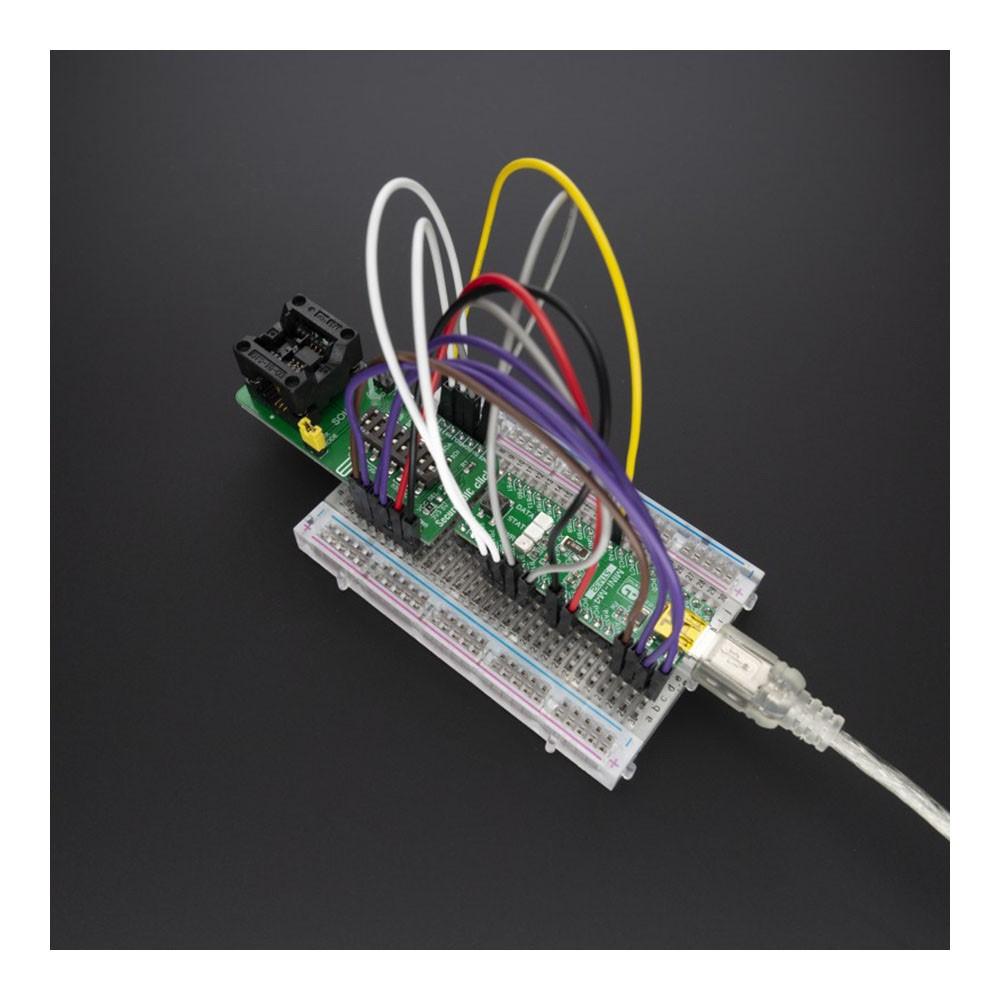
Overview
The Secure SOIC Click Board™ is a universal, socket-based click board, specifically designed for the Microchip CryptoAuthentication™ devices in an 8-pin SOIC package. This click board™ supports the SPI, I2C, and the SWI interface based ICs from the CryptoAuthentication™ family with a flexible command set, that allows use in various security applications, including Network/IoT Node Endpoint Security, Secure Boot, Small Message Encryption, Key Generation for Software Download, Ecosystem control, Anti Counterfeiting and similar.
The Secure SOIC Click Board™ is supported by a mikroSDK compliant library, which includes functions that simplify software development. This Click Board™ comes as a fully tested product, ready to be used on a system equipped with the mikroBUS™ socket.
Note: The Secure SOIC Click Board is supp[lied with three ATSHA204A devices.
Downloads
La carte Secure SOIC Click Board™ est une carte universelle à base de socket, spécialement conçue pour les dispositifs Microchip CryptoAuthentication™ dans un boîtier SOIC à 8 broches. Cette carte Click Board™ prend en charge les circuits intégrés basés sur les interfaces SPI, I2C et SWI de la famille CryptoAuthentication™ avec un ensemble de commandes flexible, qui permet une utilisation dans diverses applications de sécurité, notamment la sécurité des points de terminaison des nœuds réseau/IoT, le démarrage sécurisé, le chiffrement des petits messages, la génération de clés pour le téléchargement de logiciels, le contrôle de l'écosystème, la lutte contre la contrefaçon et autres.
La carte Secure SOIC Click Board™ est prise en charge par une bibliothèque compatible mikroSDK, qui comprend des fonctions qui simplifient le développement logiciel. Cette carte Click Board™ est un produit entièrement testé, prêt à être utilisé sur un système équipé du socket mikroBUS™.
Remarque : la carte Secure SOIC Click est fournie avec trois dispositifs ATSHA204A.
| General Information | |
|---|---|
Part Number (SKU) |
MIKROE-3788
|
Manufacturer |
|
| Physical and Mechanical | |
Weight |
0.025 kg
|
| Other | |
Country of Origin |
|
HS Code Customs Tariff code
|
|
EAN |
8606018719884
|
Warranty |
|
Frequently Asked Questions
Have a Question?
Be the first to ask a question about this.

